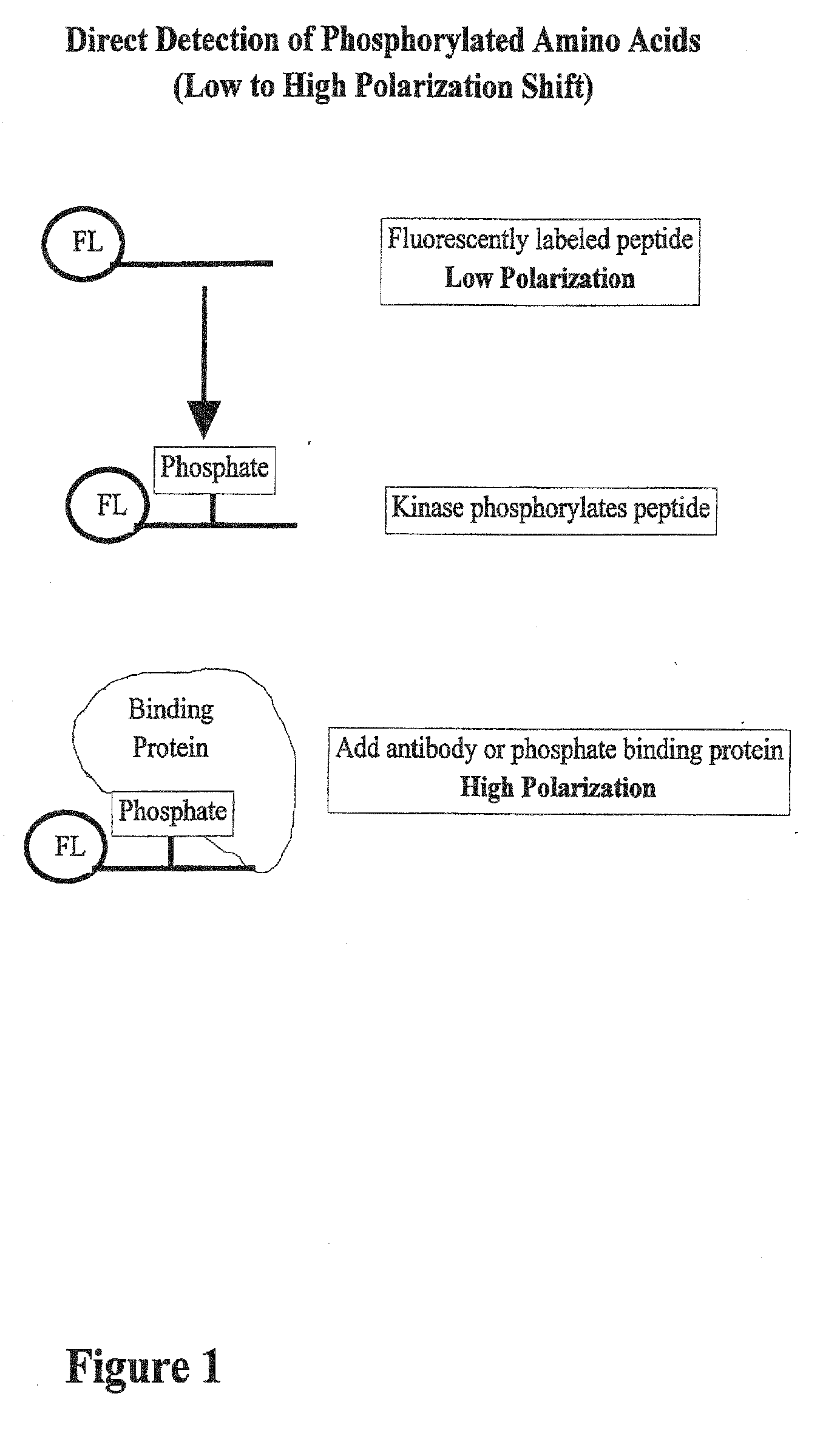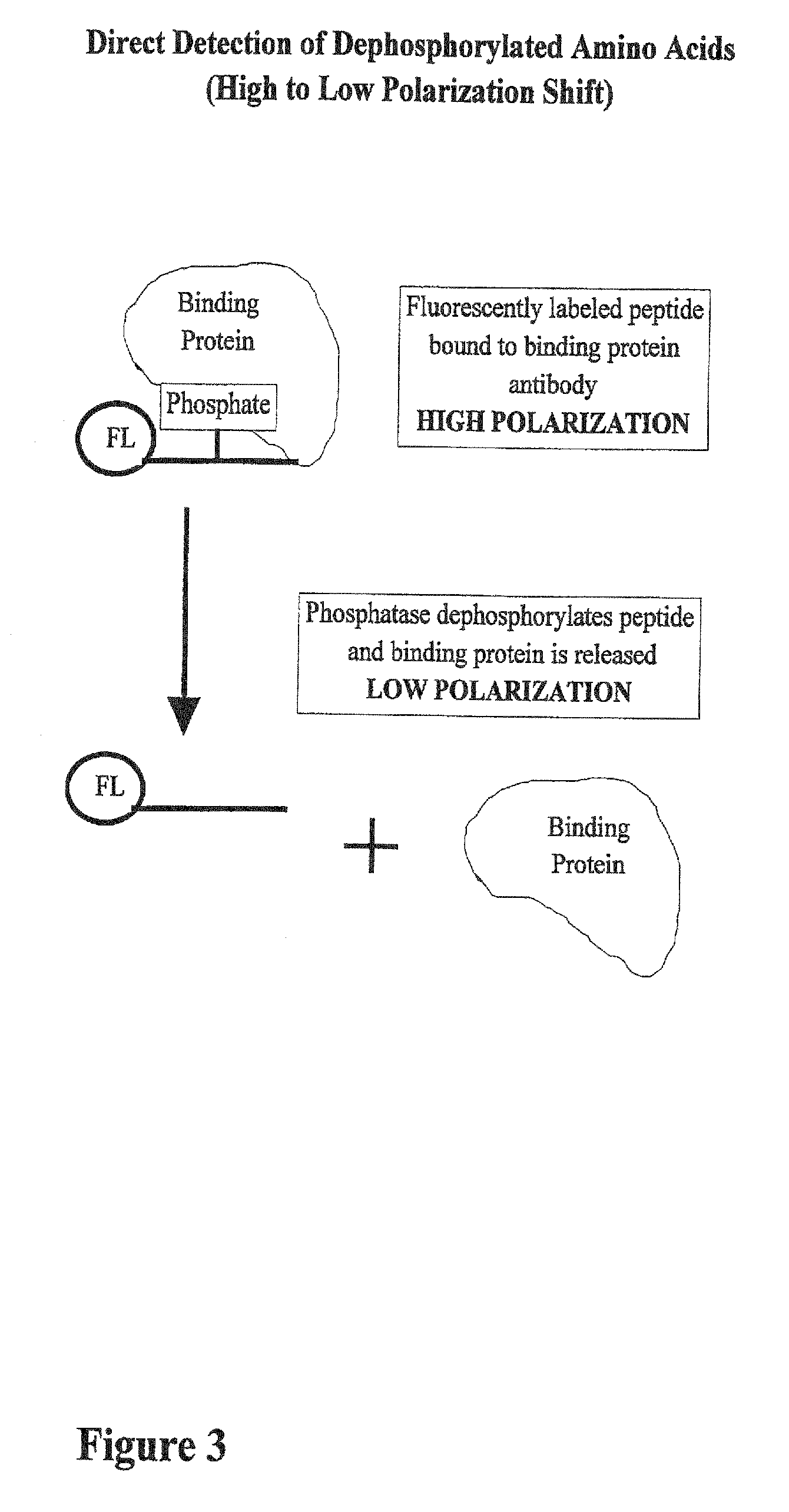Kinase and phosphatase activity measurement using fluorescent polarization
- Summary
- Abstract
- Description
- Claims
- Application Information
AI Technical Summary
Benefits of technology
Problems solved by technology
Method used
Image
Examples
example 1
Fluorescein Amine Labeling Protocol for Labeling Peptides
[0043] The pp60c-src C-terminal phosphoregulatory peptide (BIOMOL; Plymouth Meeting, Pa.) was fluorescently labeled according to the instructions included with the fluorescein amine labeling kit (PanVera Corporation; Madison, Wis.). Briefly, 50 mg of the peptide was labeled at 37° C. for one hour in a 50 mL reaction containing 5 mL 10× coupling buffer (1 M KPO4, pH 7.0) and 5 mL 20 mM fluorescein. The reaction was then quenched with 5 mL 1 M Tris-HCl (pH 8.0) and incubated at room temperature for 30 minutes. Fluorescein-labeled products were then separated by thin layer chromatography. Using silica TLC plates, 2 mL of the reaction products were spotted onto the origin. The products were then separated for 6 hours using 4:1:1 n-butanol:acetic acid:water (v / v) as the solvent. The plate was then dried and photographed, and fluorescein-labeled peptides were scraped off the plate and eluted into 200 mL 50 mM Tris-HCl (pH 8.0).
[0...
example 2
[0045] In FIG. 2, the substrate for the kinase can be any peptide or protein and size is not a limitation. Also, there is no limitation on the concentration of the peptide or protein. Once the kinase reaction has occurred, a high polarization complex is the added to the reaction. This complex contains a fluorescently labeled phosphorylated peptide bound to protein. When the reaction and high polarization complex are mixed, the phosphorylated amino acids produced in the reaction compete for binding to the proteins in a high polarization mix. As the binding proteins are released from the fluorescently labeled peptide, the polarization value of the peptide goes down. In this case the shift in polarization is from a high polarization complex to a low polarization free phosphopeptide. In a simplified version of this assay, both the kinase reaction and the high polarization complex are mixed together at the beginning of the reaction. As the reaction proceeds, the polarization value goes d...
example 3
[0046] In FIG. 3, the reaction begins with a high polarization mixture, which is a binding protein attached to a fluorescently labeled phosphopeptide. A phoshatase, an enzyme that removes phosphate groups from other molecules, is added to the reaction and the polarization value goes down. Phosphatase enzymes are important in cellular regulation because they perform the opposite role of kinases.
PUM
 Login to View More
Login to View More Abstract
Description
Claims
Application Information
 Login to View More
Login to View More - R&D
- Intellectual Property
- Life Sciences
- Materials
- Tech Scout
- Unparalleled Data Quality
- Higher Quality Content
- 60% Fewer Hallucinations
Browse by: Latest US Patents, China's latest patents, Technical Efficacy Thesaurus, Application Domain, Technology Topic, Popular Technical Reports.
© 2025 PatSnap. All rights reserved.Legal|Privacy policy|Modern Slavery Act Transparency Statement|Sitemap|About US| Contact US: help@patsnap.com



